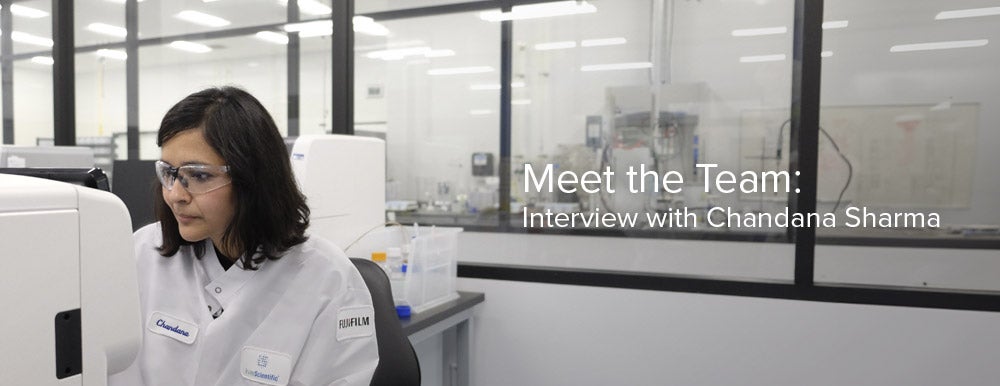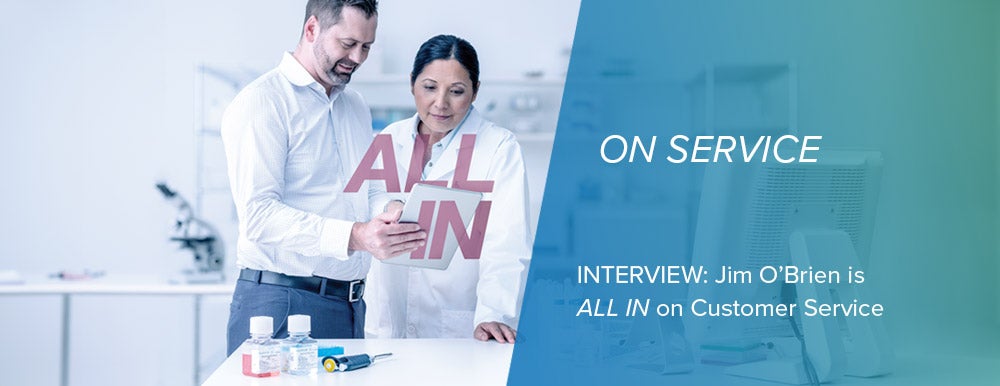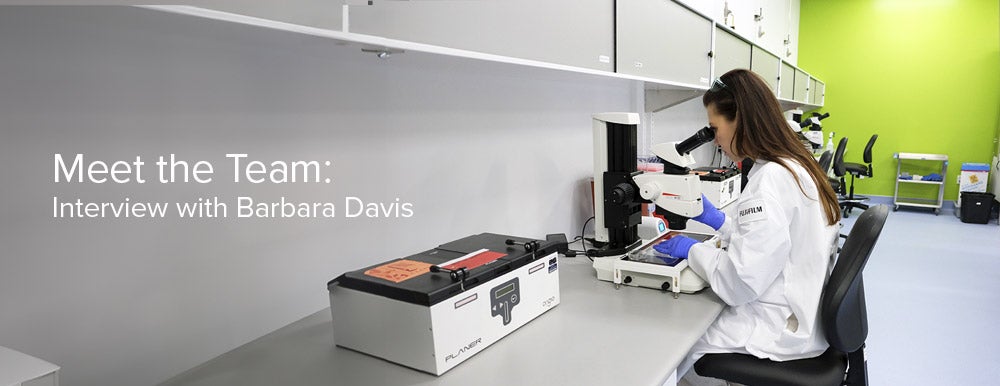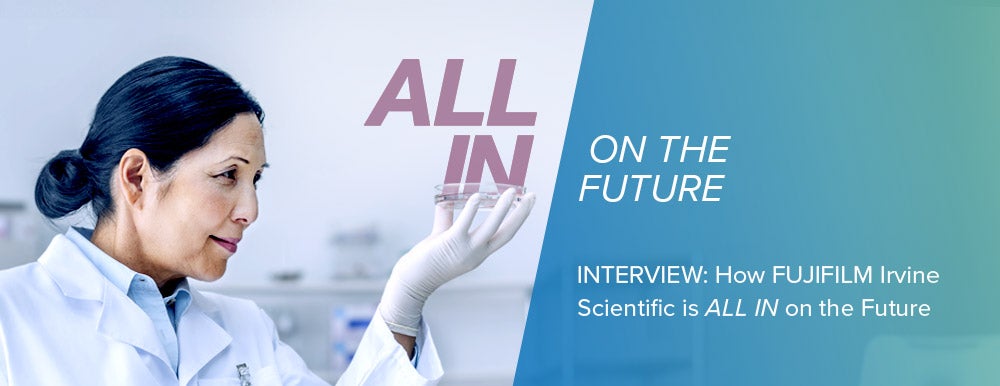We use cookies to make your experience better. To comply with the new e-Privacy directive, we need to ask for your consent to set the cookies. Learn more.
The Impact of Serum and Serum-derived Undefined Biologic Modifiers in Cell Culture

Since its first description in 1885 by Wilhelm Roux, cell culture has become the quintessential tool in basic and translational biological research and with cells becoming an advanced medical product in the field of cell based therapy it is now a manufacturing process. Though such applications hold great promise for scientific and medical advancement, the high dosages of cells required have proven to be a major limiting step. Therefore, improved in vitro expansion of cells is of major importance, necessitating the availability of adequate culture media able to support a high quality clinical grade cell product with desired cell numbers and characteristics.
Classical culture media generally consists of a basal medium supplemented with serum, most commonly of animal origin such as fetal bovine serum (FBS). Serum is an undefined mixture of proteins, hormones, minerals, growth factors, and lipids, among a host of other components. Its composition is influenced by various factors including the method of blood collection and processing, donor diet and country of origin, and the inherent biological differences between donors. Most animal strains used in research originate from specific and well-characterized genetic backgrounds and are fed specific diets in an attempt to minimize variability. Unfortunately, this uniformity is lost when it comes to animal serum as a genetically homogeneous population of cows as well as a consistent feed diet is lacking, resulting in wide variations among the serum compositions obtained. With this in mind, serum should be considered a heterogeneous mixture rather than a single reagent and medium preparations containing different serum lots considered distinct media.
Further supplementation of serum to a basal medium already containing defined levels of key components may result in concentrations that are detrimental or even cytotoxic to a given cell type of interest1. Serum can vary widely from lot to lot in the levels of hormones, lipids, and proteins. Proteins alone can vary between 200 to 400 factors that regulate cell attachment, growth, and many other cellular functions. This complexity has important implications for cell culture as each cell type has its own unique requirements. For example, a growth factor for one cell type may serve as a differentiation factor for another. Hormones can also present large variations, particularly due to variability based on the sex of the donor. Although they are usually tightly regulated in vivo with small changes resulting in major impacts at the cellular level, such aspects are oftentimes overlooked when considering the proper cell culture setup. For example, the exposure of female-derived PBMCs to testosterone in cell culture was shown to result in dramatic functional changes in response to endotoxin and TNF-α 2, suggesting the importance of considering sex differences in assay design. Lipids are another important serum component that can see widely varying ranges and are associated with a host of cellular functions, including signaling and membrane integrity, and can be soluble or associated to proteins such as serum albumin. Cholesterol as an example has been reported to range from 29 to 165 g/L. This high variability in lipid concentration range can impact cellular function as in the case of dendritic cells (DC) and their responses to lysophosphatidic acid and cardiolipin in lipid fractions. Their presence at the micromolar range in serum has been shown to downregulate CD1 at the transcriptional level, restricting DCs to stimulate non CD1 restricted T-cells3. In recent years there has been increasing focus on the roles of extracellular vesicles (EVs), and it is now recognized that serum also contains high amounts of EVs. These EVs may mediate intercellular signaling by making use of bioactive lipids and lipid modified growth factors at the cell surface or can be internalized by the cells for the delivery of cargo such as mRNA, miRNA and rRNA4. It has been shown that such EVs are important for the growth of human and mouse cells, and can significantly influence their behavior5,6. Notably, serum derived EVs have been reported to be responsible for masking or misleading results in the EV research field, further highlighting the importance of considering the impact of serum components across cell culture applications and the advantages of serum-replacement strategies.
Experimental variability and the difficulty of reproducing results within and across research groups is unfortunately a common occurrence observed in cell culture. While part of this challenge can be attributed to differences in cell models and assay protocols, the usage of undefined components such as serum is often a major contributing factor. Serum sourcing and variability therefore necessitates the pre-screening of multiple lots to meet the specific requirements of each cell type and application in order to improve reliability of assay results, which can be costly and time consuming. Furthermore, fluctuations in cost and the difficulty of acquiring adequate lot sizes for long term studies presents an added challenge to the use of serum in cell culture applications. It is important to note that the growing awareness and concern for animal welfare and the implementation of the 3R rule (reduce, replace, and refine) concerning animal experimentation will continue to impact the availability and role of serum in cell culture applications and increase the relevance of a move towards non-animal serum sources and serum-free media alternatives.
In the field of cellular therapy the cells are the final product that will be administered to the patients, usually in high dosages. The high fold expansion required to achieve those dosages can generally be obtained with the use of serum, so despite its variability it is still seen as the best basal media supplement. It is becoming clear that while expansion is an important parameter, the functional quality and reliability of the product is equally crucial. One example is the clinical application of natural killer (NK) cells due to their ability to target cancer cells. To be of clinical usage NK cells have to undergo in vitro expansion and still retain their cytotoxicity potential. During the development of a chemically-defined formulation for NK cell culture, we have observed that FBS-containing media can indeed result in a larger fold expansion of the immortalized cell line NK92 (Figure 1.A.), but the cytotoxicity ability of the cells grown in 10% FBS seems to be much lower than that observed with a chemically-defined medium (Irvine Scientific prototype in development) (Figure 1.B). This would most likely result in very different therapeutic effects, with cells grown in serum being four times less effective even at higher doses. The serum variability may also be at least partly responsible for the divergent outcomes described in some of the ongoing clinical trials. One recent study, for instance, has shown that different serum batches can lead to inhibitory or stimulatory MSC (mesenchymal stromal cell) populations, which in turn have a niche influence and lead to different HSC (hematopoietic stem cell) engraftment outcomes7, exemplifying how FBS based culture can strongly influence clinical results. Lack of reproducibility has actually been considered one of the main hurdles in moving many cancer-treating therapies to the clinic, with programs being set and funded just for the purpose of validating published studies, such as The Reproducibility Initiative. It is thus clear that there is an elevated cost associated with the use of undefined components, both at the economical and human level. Sadly, divergent clinical outcomes may end up halting some clinical trials, denying patients the access to a treatment option that could have proven efficacious if the cellular product had been generated under a defined set of conditions.
Figure 1. Expansion and cytotoxicity profiles of NK92 cells grown under serum-containing or chemically-defined conditions. NK92 were expanded for 18 days in RPMI-1640 (Irvine Scientific, Catalogue# 9154) supplemented with 10% FBS or a chemically-defined prototype. After 18 days the fold expansion was calculated (A), and the cytotoxicity percentage against K562 cells, at different effector/target (E/T), was determined (B).
Cellular therapy products need not only to perform but also to be risk free. Serum comes with the potential risk of contamination with prion, bacteria or viruses. These can impact the cells, as in the case of endotoxins, which are present in all sera products, or pose a risk for the patient itself. Clinically there is also a concern with potential immunogenic reactions. It has been estimated that with a dosage of 108 cells expanded in FBS containing media 7-30 mg of bovine proteins are infused8, which can generate immunological responses9. For example, N-glycolylneuroaminic acid can be metabolically incorporated into human embryonic stem cells and result in the binding of immunoglobulins and complement activation in vivo10. One way to circumvent this problem has been the use of human serum, human platelet lysate or human umbilical cord blood serum. The use of these alternatives has been tested extensively in MSC culture with very promising results11,12 but they do nothing to alleviate concerns with lot variability, undefined composition and risk of contamination.
The focus of clinical applications is now towards safe, reproducible, large-scale production of high quality cells, which cannot be generated with the use serum and undefined supplements during the manufacturing process. One step in the direction of creating more controlled processes is the use of serum-free, chemically-defined media formulations, where the essential factors are provided individually at precise concentrations.
References
- Poiley, J.A., et al., Characterization of normal human embryo cells grown to over 100 population doublings. In Vitro, 10 (5): 405-412, (1978).
- Moscovis, S.M., et al., Effects of gender, cytokine gene polymorphisms and environmental factors on inflammatory responses. Innate Immun. 21 (5): 523-530, (2015).
- Leslie, D.S., et al., Serum lipids regulate dendritic cell CD1 expression and function. Immunology, 125 (3): 289-301, (2008).
- Shelke, G.V. et al., Importance of exosome depletion protocols to eliminate functional and RNA-containing extracellular vesicles from fetal bovine serum. J. Extracell Vesicles, Sep 30;3. doi: 10.3402/jev.v3.24783. eCollection (2014).
- Eitan, E., et al., Extracellular vesicle-depleted fetal bovine and human sera have reduced capacity to support cell growth. J. Extracell Vesicles, . doi: 10.3402/jev.v4.26373. eCollection (2015).
- Wie, Z., et al., Fetal bovine serum RNA interferes with the cell culture derived extracellular RNA. Sci Rep., Aug 9;6:31175. doi: 10.1038/srep31175.
- Kim, J.H., et al., Heterogeneous niche activity of ex-vivo expanded MSCs as factor for variable outcomes in hematopoietic recovery, Plos One, 11(12):e0168036. doi: 10.1371/journal.pone.0168036. eCollection (2016).
- Hemeda, H. et al., Evaluation of human platelet lysate versus fetal bovine serum for culture of mesenchymal stromal cells. Cytotherapy. 2, 170-80 (2014).
- Sundin, M. et al., No alloantibodies against mesenchymal stromal cells, but presence of anti-fetal calf serum antibodies, after transplantation in allogeneic hematopoietic stem cell recipients. Haematologica 9, 1208-15 (2007).
- Martin, M.J., et al., Human embryonic stems cells express an immunogenic nonhuman sialic acid. Nat. Med., 11 (2): 228-232, (2005).
- Gottipamula, S., et al., Serum-free media for the production of human mesenchymal stromal cells: a review. Cell Prolif. 46, 608-27 (2013).
- Witzeneder, K., et al., Human-derived alternatives to fetal bovine serum in cell culture. Tranfus Med Hemother., 40 (6): 417-423, (2013).









